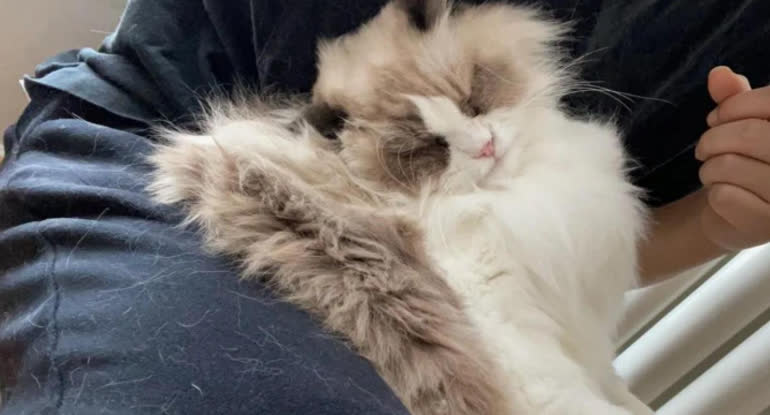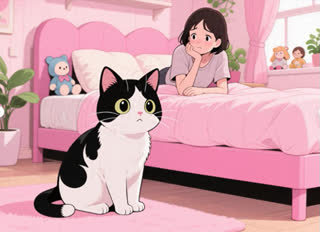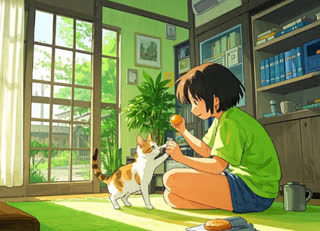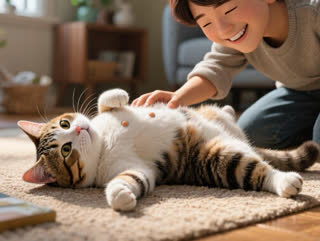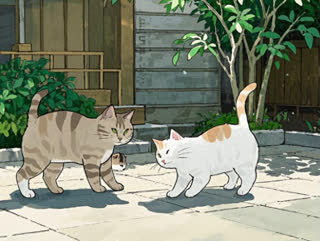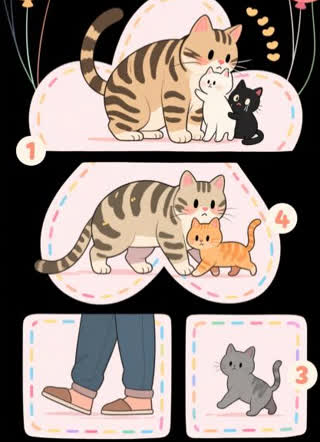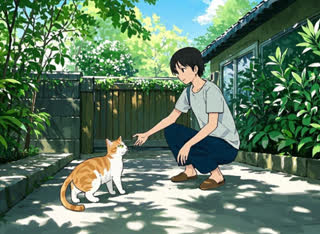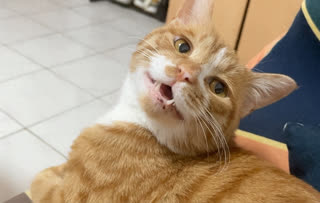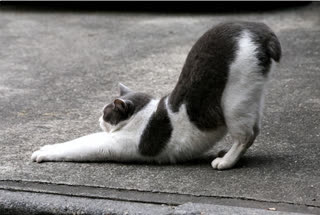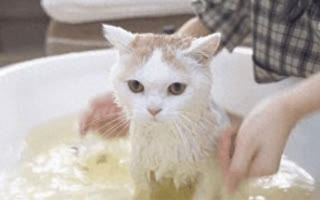If you’re a Ragdoll cat owner, you’ve probably marveled at their stunning, silky coats—those soft, semi-long hairs that make them look like living plush toys. But along with that beauty often comes a common frustration: excessive shedding. Many Ragdoll parents find themselves constantly vacuuming, lint-rolling their clothes, and wondering if their cat’s shedding is normal. The good news is, while Ragdolls are moderate to heavy shedders by nature, excessive shedding usually signals an underlying issue. Let’s explore the most likely causes and what you can do about them.
Seasonal Shedding: Nature’s Way of Adapting
First, it’s important to understand that some shedding is completely normal—especially seasonal shedding. Ragdolls, like many cat breeds, have a natural cycle of hair growth and loss tied to changes in daylight. Dr. Emily Carter, a feline veterinarian with over 10 years of experience, explains, “Ragdolls typically shed more in spring and fall. In spring, they lose their thick winter coats to prepare for warmer weather, and in fall, they grow in a denser coat for the cold months ahead. This seasonal shift is a biological response to daylight hours, not just temperature.”
For example, Lisa, a Ragdoll owner in Oregon, noticed her cat Oliver’s shedding spikes every March and October. “In spring, I’d find clumps of fur on the couch daily, but by summer, it calms down. My vet assured me it’s totally normal as long as his coat looks healthy otherwise,” she says. Seasonal shedding usually follows a predictable pattern—if your Ragdoll’s shedding fits this timeline and their coat remains shiny and full, it’s likely just nature at work.
Dietary Deficiencies: What You Feed Matters Most
One of the top culprits behind excessive shedding in Ragdolls is poor nutrition. These cats have specific dietary needs to maintain their luxurious coats, and a diet lacking essential nutrients can lead to dull fur, breakage, and increased shedding. “Ragdolls require a diet rich in high-quality protein, omega-3 and omega-6 fatty acids, and vitamins like biotin and vitamin E to support healthy hair follicles,” says Dr. Carter. “When these nutrients are missing, the hair becomes weak and falls out more easily.”
A common mistake many owners make is feeding generic or low-quality cat food. These diets often contain fillers, artificial preservatives, or insufficient protein, which can’t support a Ragdoll’s coat health. Take Mark’s experience: his Ragdoll, Bella, was shedding excessively until he switched her food. “I was feeding a budget brand, and Bella’s fur was always dry and coming out in handfuls. After switching to a grain-free food with salmon (a great source of omegas), her shedding decreased significantly within a month, and her coat is so much softer now,” he shares.
Food allergies or intolerances can also cause excessive shedding. Ingredients like corn, soy, or certain proteins can trigger inflammation, leading to skin irritation and hair loss. If you suspect a dietary issue, look for other signs like itchy skin, redness, or digestive problems, and consult your vet about an elimination diet.
Underlying Health Issues: When Shedding Signals a Problem
Sometimes, excessive shedding is a red flag for an underlying health condition. Ragdolls, while generally healthy, can be prone to issues that affect their coats. Thyroid problems, particularly hyperthyroidism, are common in middle-aged and senior cats and often cause increased shedding. “Hyperthyroidism speeds up the body’s metabolism, which can disrupt the hair growth cycle, leading to thinning fur and excessive shedding,” explains Dr. Carter. Other symptoms may include weight loss, increased appetite, or restlessness.
Skin infections, whether bacterial or fungal (like ringworm), can also cause localized or widespread hair loss. Mites, fleas, or ticks can irritate the skin, leading to scratching and hair loss. Autoimmune diseases, such as alopecia areata, where the immune system attacks hair follicles, are less common but can also result in significant shedding.
If your Ragdoll’s shedding is sudden, accompanied by bald patches, red or flaky skin, or changes in behavior (like lethargy or decreased appetite), it’s crucial to consult a vet promptly. Early diagnosis and treatment can prevent further hair loss and address the root cause.
Inadequate Grooming: A Simple Fix
Ragdolls have semi-long hair that’s prone to matting, and inadequate grooming can exacerbate shedding. Their fur traps loose hairs, which, if not removed through brushing, will end up on your furniture, clothes, and floors. “Ragdolls need regular brushing to remove loose hair before it sheds naturally,” advises Dr. Carter. “Without it, loose hairs can become tangled, leading to mats that pull on the skin and cause more hair loss when they’re eventually removed.”
The frequency of grooming depends on the season. During peak shedding seasons (spring and fall), aim to brush your Ragdoll 3–4 times a week. In other months, once or twice a week may suffice. Use a slicker brush or a rubber grooming tool, which are gentle on their skin and effective at removing loose fur. Jenny, a Ragdoll owner, learned this the hard way: “I used to brush my cat Leo once a month, and his shedding was out of control. Once I started brushing him three times a week, I noticed a huge difference—less fur on my clothes, and Leo actually enjoys the bonding time now!”
Environmental Stress: Anxiety’s Impact on Coats
Cats are sensitive creatures, and stress can take a toll on their physical health—including their coats. Ragdolls, known for their gentle and affectionate nature, are particularly prone to stress-related shedding. Common stressors include moving to a new home, the arrival of a new pet or family member, changes in routine, or even loud noises.
Stress triggers the release of cortisol, a hormone that can disrupt the hair growth cycle, leading to excessive shedding. “I see this often in clinics—owners report increased shedding after a major life change for their cat,” says Dr. Carter. “The shedding usually occurs 2–4 weeks after the stressful event, as the hair follicles enter a resting phase and hair falls out.”
Signs that stress may be the cause include other anxiety-related behaviors: hiding, decreased appetite, over-grooming (which can also cause hair loss), or aggression. To reduce stress, create a safe, consistent environment for your Ragdoll. Provide hiding spots, vertical spaces (like cat trees), and maintain a regular feeding and play schedule. Pheromone diffusers can also help calm anxious cats.
Age-Related Changes: Shedding Through the Years
As Ragdolls age, their shedding patterns can change. Kittens have softer, shorter coats that shed minimally, but as they mature (around 1–2 years old), their adult coats come in, and shedding increases. Senior Ragdolls (8 years and older) may experience more shedding due to age-related changes in their skin and coat health. “Older cats may have reduced nutrient absorption, leading to coat issues, or they may groom themselves less effectively, causing loose hair to accumulate and shed more,” explains Dr. Carter.
Regular vet check-ups become even more important for senior Ragdolls to address age-related health issues that could contribute to excessive shedding, such as thyroid problems or kidney disease.
How to Manage Excessive Shedding in Ragdolls
Now that we’ve covered the causes, let’s look at practical steps to manage excessive shedding:
Opt for a high-quality diet: Choose food with real meat as the first ingredient, rich in omegas, and free from fillers. Consider adding supplements like fish oil (with vet approval) for extra coat support.
Excessive shedding in Ragdoll cats isn’t something you have to live with—more often than not, it’s a manageable issue with the right approach. By understanding the causes—whether seasonal, dietary, health-related, or environmental—you can take targeted steps to reduce shedding and keep your Ragdoll’s coat healthy and beautiful. Remember, a little shedding is normal, but sudden or excessive loss deserves attention. With proper care, you and your fluffy companion can enjoy a (slightly) less hairy home!
